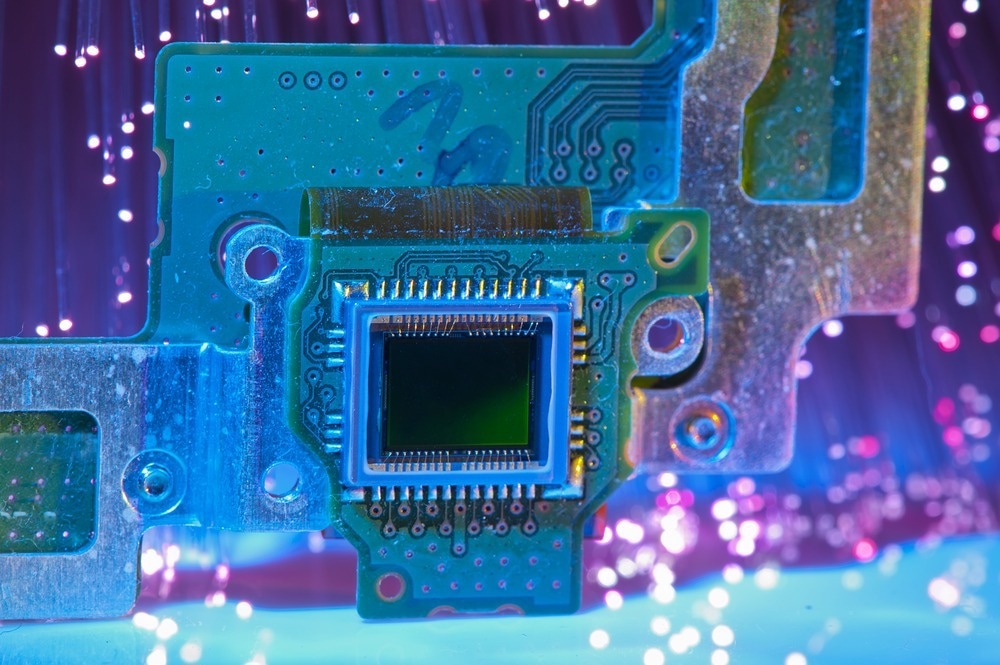A study published in Optics and Laser Technology discusses charge-coupled devices (CCD), recent advances in short-pulse laser-induced breakdown effects on CCDs, laser damage effects, the influence of laser parameters on CCDs, and the inherent relationship between laser parameters and damage effects. This research lays the theoretical and experimental foundation for future laser protection measures and photoelectric countermeasure systems.

Study: Recent advances of short-pulse laser-induced breakdown effect on charge-coupled device detectors. Image Credit: asharkyu/Shutterstock.com
What is a Charge Coupled Device (CCD)?
A charge-coupled device (CCD) is a photon detector with exceptional sensitivity. It is divided into many light-sensitive sections called pixels, which help construct an image of the target area.
CCDs capture images through the conversion of photons to electrons. The image is divided into pixels by the CCD sensor and each pixel is turned into an electrical charge with an intensity proportional to the captured light intensity.
Significance of CCD and Impact of Laser Radiation
CCD detectors have become increasingly important in military equipment for information warfare that extends beyond the optical range. Metal oxide semiconductor (MOS) CCDs are popular because of their small size, lightweight, high sensitivity and resolution, low cost, and lower power consumption.
The interaction of diverse irradiation sources with CCD detectors has grown into a research hotspot.
CCDs are extremely sensitive to X-rays, plasma, and laser light, making them a great asset in laser protection and photoelectric countermeasure system. However, lasers cause more severe damage to the CCDs than other radiation sources. Laser irradiation can cause a temporary decline in CCD performance (laser dazzling).
In information warfare, it is essential to protect systems while destroying adversaries'. Therefore, it is necessary to investigate the damaging effects of lasers on CCDs.
Advancements in Short-Pulse Laser-Induced Breakdown Effects on CCDs
Researchers started irradiating the CCD detectors using radiation in the 1970s. Before 2010, researchers investigated the damage mechanism of CCDs and conducted damage studies with various radiation sources. However, laser damage to CCDs became a research focus.
After 2010, several types of laser damage to CCDs caused by millisecond lasers, continuous lasers, nanosecond lasers, femtosecond lasers, and picosecond lasers were examined.
Scientists have discovered unusual phenomena in laser irradiation, such as femtosecond laser filament super-continuum radiation and nanosecond laser-induced air plasma radiation. They combined these radiation types to analyze the interference effect on CCDs.
Some researchers combine two or more different lasers to investigate interference and CCD damage. These findings are critical for future laser interference and protection device development.
Damaging Effects of Different Lasers on CCD Detectors
Simulation models and experimental systems for the nanosecond and picosecond lasers irradiating CCDs are relatively established. They can cause intense heat impacts and irreparable CCD damage in real-world applications. However, compared with femtosecond lasers, they often require more energy to produce immediate CCD interference.
Substantial CCD interference can be achieved with femtosecond lasers using relatively little energy, and damage is not thermally induced. Lasers with femtosecond duration do not produce a broad ablation area with concealed damage. Therefore, femtosecond lasers will eventually become a focal point of laser blinding research.
Influence of Laser Parameters
Energy density
The CCD's energy density influences the laser-induced breakdown impact of CCDs. For various laser types, the damage increases with increasing laser intensity. However, the damage mechanism is different for the picosecond, nanosecond, continuous-wave, and femtosecond lasers.
Repetition rate
A CCD's cumulative effect is determined by its repeat rate. After absorbing laser energy, a CCD transmits heat between functional layers and exchanges energy. The CCD's temperature progressively rises if the energy is not depleted before the second pulse. Temperature builds up until it approaches the substance's melting point, which causes significant damage.
Wavelength
The relation between laser wavelength and the CCD damaging effect is not linear. The destructive effect of a laser on a CCD is most significant at the peak response wavelength. Therefore, the harmful effect on the CCD steadily reduces as the wavelength deviates from the peak response wavelength.
Relationship Between the Laser Parameters and Damage Effects
Laser irradiation on CCDs and the relation between laser damage effects and parameters provide insights into laser protection and blinding in future information warfare. Lasers with a high repetition rate, peak power, and response wavelength can be coupled to create a new powerful laser for laser blinding purposes.
Laser interference can be suppressed using digital micro-mirror devices with multiplexed wavelengths for laser protection. In addition, thickening silica layers, improving lens front filters, and substituting shielding metal elements with higher melting point materials are efficient ways to improve the CCD's durability.
Conclusion and Future Outlook
CCDs are critical in developing military equipment and weapon systems as they are the basic component of photoelectric systems. They are the main target of laser radiation in photoelectric protection and countermeasure systems.
Improved internal device construction and irradiation source combination will be necessary in the future for efficient laser blinding and protection.
Reference
Li, Y., Kou, Z., Wang, G., Hou, Y., Xie, X., Yu, Y., Wang, Y., & Lu, Z. (2022). Recent advances of short-pulse laser-induced breakdown effect on charge-coupled device detectors. Optics & Laser Technology. https://www.sciencedirect.com/science/article/abs/pii/S0030399222006843
Disclaimer: The views expressed here are those of the author expressed in their private capacity and do not necessarily represent the views of AZoM.com Limited T/A AZoNetwork the owner and operator of this website. This disclaimer forms part of the Terms and conditions of use of this website.